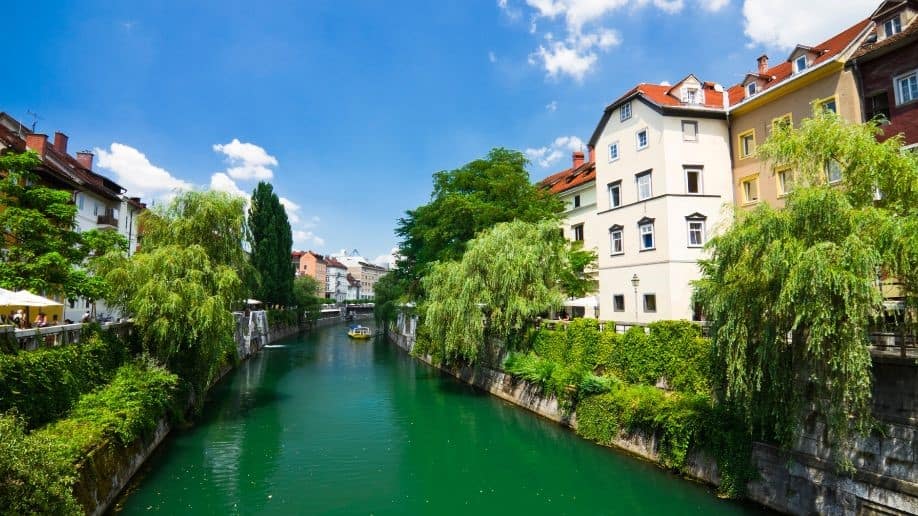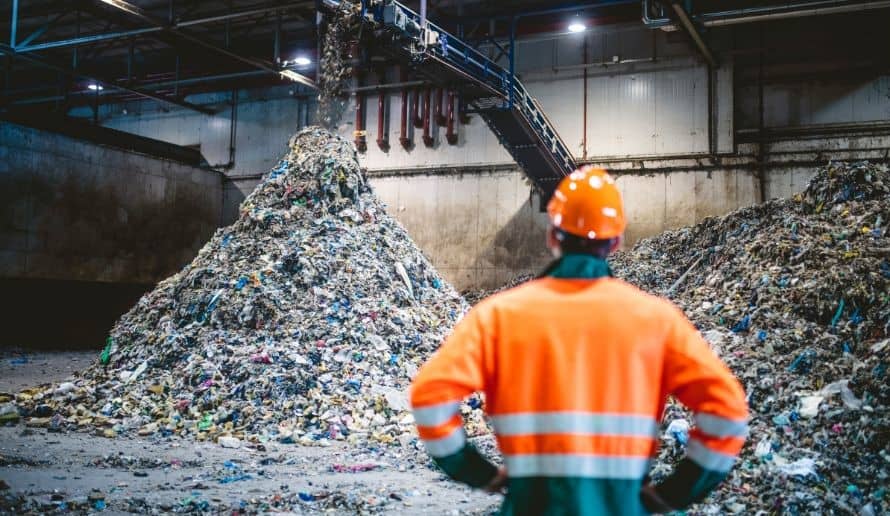
[Panorama of Sustainable Cities] #3 Waste management, the keys to Ljubljana’s success
4 minutes of reading
in partnership with


Slovenia’s capital is at the forefront in several areas connected with the environment. In particular, it is recognised for having succeeded where many large cities are struggling: in waste management. We look back at 20 years of good decisions, and a combination of political will and local support.

Slovenia and its capital Ljubljana have been winning environmental awards for the last ten years. Ljubljana was crowned European Green Capital in 2016 and Slovenia was recognised as the most ecological destination in the world in 2018, scoring 96/100 on environmental and sustainability indicators, making it the queen of green tourism. The country is also a haven for biodiversity, 60% of Slovenian landmass is covered in lush forest and more than 40 parks and reserves are home to 20,000 species of plants and wildlife.
But if there is one area in which Slovenia – and Ljubljana in particular – excels, it is waste management. The capital is regularly described as the European champion in terms of recycling and waste reduction and is often held up as an example by other European cities.

An effective model for managing household waste
In a ten-year period, the metropolis of Ljubljana (Ljubljana and 9 municipalities, with a population of around 380,000) has managed to increase its recycling rate for organic and recyclable waste tenfold, as well as reducing the amount of waste sent to landfill by 59%. The public company in charge of waste management, Snaga, has achieved results that may well be the envy of many: 68% of household waste is collected separately (compared with 22% in 2007), and only 120 kg of residual non-recovered waste is generated per inhabitant per year, compared with 350 kg per inhabitant per year in the Ile-de-France region. And the capital has no intention of stopping there. It has pledged to halve the quantity of residual waste by 2025, and to achieve a separate collection (recycling) rate of 78%. The city is pursuing a truly comprehensive waste reduction policy, which involves optimising sorting and collection and achieving real results in recovery and recycling. It is achieving this, and this is important to note, while having one of the lowest waste management costs in Europe. So how is it that Ljubljana has seen success for more than 10 years, while France has been struggling to implement source separation of bio-waste, even though it is supposed to come into force on 1 January 2024 (in accordance with European law and the 2020 AGEC Act)?
Visuels Articles LH – 1
The key to success: door-to-door collection
Before 2002, in Slovenia all waste was processed in the same way: landfill. This changed gradually once the country joined the EU. But the change was radical. From 2002, the capital introduced separate collections for cardboard, paper, glass and packaging in roadside bins. In 2006, Snaga began door-to-door bio-waste collection. It then extended the door-to-door model to paper and packaging. With the exception of the city centre, where collection is still carried out using different-coloured underground collection points to encourage residents to sort their waste, the door-to-door collection model has been rolled out across the whole city. Once the model had been deployed and understood by the population, the second stage involved reducing the collection frequency for residual waste, while maintaining the frequency for recyclable and compostable waste. Of course, these frequencies are adapted according to the density of the population in the different neighbourhoods. The aim here has been to help residents sort their waste more efficiently. Raising awareness has been essential. In Ljubljana, access to the bins for non-recyclable waste and bio-waste is subject to a charge, while the others are free. The cost to each household is around €8/month. In a report, Zero Waste notes that the reduction in collection frequencies has not been without hitches or protests by residents. But Snaga has been consistent with its strategy, while stepping up its communication through awareness campaigns aimed at getting people on board. The company also organised visits for the press and the general public to demonstrate and explain how to sort waste more effectively. Once correctly sorted, residual waste represents only a small proportion of the overall total.Getting the population on board
Waste collection centres on the outskirts of the town and a bulky waste collection service are also available for any waste leaving the door-to-door stream (green waste, hazardous materials, WEEE, etc.). These efforts have paid off and have helped to bring about a change in residents’ behaviour. But the will has also been political, since in 2014 the plan to build an incinerator was permanently dropped as the rates of separate collection and recycling increased. This was a strong signal of the city’s commitment, and it was at this time that the city embarked on its Zero Waste initiative. On the other hand, the city’s waste treatment centre, the RCERO, is one of the largest and most modern in Europe. It is even a cornerstone of the city’s waste policy. Opened in 2015, it recycles 98% of the household waste collected in 58 municipalities into new objects, compost or biofuel. The RCERO is also energy self-sufficient, with up to 20% of its electricity resupplying the grid. This ultra-modern waste processing centre has also given the public a better understanding of the challenges and benefits of a circular economy.Towards zero waste
Zero waste is the long term goal. Gradually, the city’s communications have evolved from raising awareness of waste sorting to raising awareness of more responsible consumption, prevention, the fight against waste and the promotion of reuse. This is a comprehensive circular economy policy that extends beyond simple waste collection. Whatever the type of waste – single-use packaging and plastics, bio-waste, textiles or electronic equipment – the municipality places the emphasis on throwing away as little as possible, while developing strategies for better recycling and reuse. The capital has been emulated by sixteen Slovenian municipalities, which have joined the movement and also embarked on a zero-waste approach.More reading
Read also




What lies ahead? 7 megatrends and their influence on construction, real estate and urban development
Article
20 minutes of reading

